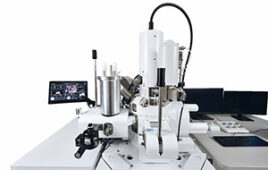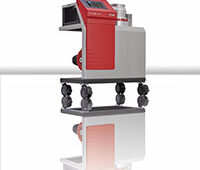 Laboratory evaporators are used to vaporize a liquid sample or the liquid component of a preparation. This is typically in order to remove the liquid from a preparation that is required to be either concentrated or dry for analysis. Evaporation is often used to prepare samples before mass spectrometry, gas chromatography or liquid chromatography. Laboratory evaporators typically use a combination of heat, motion or gas to accelerate evaporation of an organic solvent or water.
Laboratory evaporators are used to vaporize a liquid sample or the liquid component of a preparation. This is typically in order to remove the liquid from a preparation that is required to be either concentrated or dry for analysis. Evaporation is often used to prepare samples before mass spectrometry, gas chromatography or liquid chromatography. Laboratory evaporators typically use a combination of heat, motion or gas to accelerate evaporation of an organic solvent or water.
Some common types of laboratory evaporator include:
- Vacuum evaporators use a vacuum pump to reduce the pressure on a liquid, causing it to boil without increasing its temperature.
- Rotary evaporators include a motor unit which rotates an evaporation flask, a heated fluid bath which heats the evaporation flask, a vapor duct, a vacuum system, a condenser and a condensate collecting flask. Rotary evaporators are effective for rapidly removing large quantities solvent from samples. The ability to recover the solvent as well as the sample can save money as well as being better for the environment.
- Centrifugal evaporators use a spinning centrifuge to create a pressure gradient within the sample so that reduced pressure at the top causes the sample to boil from the top down without increasing its temperature. A vacuum pump further reduces pressure to enable boiling at lower temperatures and forces. Many individual samples can be loaded into a centrifugal evaporator at the same time.
- Blowdown evaporators blow a gas through the sample so that the bubbles produced increase the surface area over which evaporation takes place, accelerating the process. The most common gas used is nitrogen and they are therefore commonly referred to as nitrogen evaporators. They commonly allow multiple test tubes to be simultaneously evaporated with an array of needles directing gas into each tube. Some blowdown evaporators may also heat the samples. An extraction hood may be required to collect the vapor.





Tell Us What You Think!